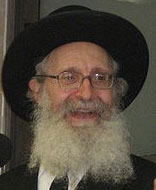In I got It!
The World’s Biggest Yeshiva
Do you know how many talmidim learn in the biggest yeshiva in the world, what its name is, and where it is located?
Yeshivas Mir, which is in the neighbourhood of Beis Yisrael in Yerushalayim, numbers over 5,000 talmidim in its student body. Shiurim are given over in many languages; Ivrit, Yiddish, English and French.
The yeshiva was established approximately two hundred years ago, in the year 5575 (1815ce) by HaRav HaGaon Rav Shmuel Tikuchinsky zt’l, and acquired its name after its location, in the village of Mir in Belarus (White Russia). At the end of the 19th century ce more than 100 talmidim were studying at the yeshiva, and when the Volozhiner yeshiva was closed down, the Mirrer yeshiva, along with the Telzer yeshiva became the main yeshivos in Lithuania. The Mirrer yeshiva survived the two world wars; during the First World War (5674-5678, 1914-1918ce) it fled deeper into Russia, returning to Mir after the war under the Riga Agreement in 5681 (1921), under which Mir now fell within the new borders of Poland. During this period until the Second World War, the yeshiva expanded and the number of talmidim rose to over four hundred.
During the Second World War (5699-5705, 1939-1945ce) a string of miracles disguised as international events saved the yeshiva. In the early days of the war, the Molotov-Ribbentrop pact between Russia and Germany divided Poland between them, and the village of Mir in Belarus also fell to Russia. The yeshiva fled across Europe and ended up in Shanghai in China, which had been captured by Japan; there it weathered the war years under the leadership of Rav Chaim Shmulevitz and Rav Yechezkel Levenstein (the mashgiach), until 5704 (1944ce) when the yeshiva ascended to Eretz Yisrael.
The yeshiva was re-established in Yerushalayim with Rav Eliezer Yehudah Finkel as Rosh Yeshiva. After the war ended, a Mirrer yeshiva was also established in Brooklyn, New York; most of the bochurim from Shanghai went to Eretz Yisrael but some came to the United States.
Today the yeshiva is headed by Rav Nosson Tzvi Finkel shlita, the grandson of the Alter of Slabodka and the son-in-law of Rav Beinish Finkel.
The bochurim and young married men learning in ‘Mir’ are spread out among various premises; in ‘Beis Sholom’, ‘the Friedman building’, ‘Slonim’, ‘Beis Yeshaya’ and ‘Beis Menachem’. In addition, a branch of the yeshiva has been established in the Brachfeld neighbourhood of Modi’in Illit, which is known as ‘Mir Brachfeld’, and another branch also exists in Ramat Shlomo in Yerushalayim.
Over a period of twenty years, the student body has increased to more than eleven times the original number; from five hundred to more than five thousand. Almost half of the talmidim are from the United States.







